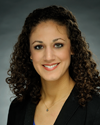 The period following discharge as a patient transitions from hospital to home can be a vulnerable time for patients, especially those who are at high risk for hospital readmission. Preventable hospital readmissions often stem from a discontinuity in a patient’s care plan due to confusion surrounding discharge instructions, changes to medication regimen, or a lack of understanding of important symptoms. Not only can this result in adverse effects for the patient, but this also can be financially costly for hospitals that care for them. Under the Centers for Medicare and Medicaid Services’ (CMS) Hospital Readmissions Reduction Program, up to 3% of a hospital’s Medicare inpatient payments are at risk if patients return to the hospital within 30 days of discharge for specific medical conditions, such as acute myocardial infarctions, heart failure, pneumonia, and chronic obstructive pulmonary disease.
The period following discharge as a patient transitions from hospital to home can be a vulnerable time for patients, especially those who are at high risk for hospital readmission. Preventable hospital readmissions often stem from a discontinuity in a patient’s care plan due to confusion surrounding discharge instructions, changes to medication regimen, or a lack of understanding of important symptoms. Not only can this result in adverse effects for the patient, but this also can be financially costly for hospitals that care for them. Under the Centers for Medicare and Medicaid Services’ (CMS) Hospital Readmissions Reduction Program, up to 3% of a hospital’s Medicare inpatient payments are at risk if patients return to the hospital within 30 days of discharge for specific medical conditions, such as acute myocardial infarctions, heart failure, pneumonia, and chronic obstructive pulmonary disease.
Increased communication with patients post-discharge can promote effective transitions of care from hospital to home. An effective mode of increasing communication is through post-discharge phone calls, which, when conducted within 48 to 72 hours after discharge, have successfully reduced hospital readmission rates and boosted patient satisfaction.
A common challenge many hospitals face with post-discharge phone calls, however, is finding the staff and time to effectively manage the calls, which can accumulate rapidly. These were the barriers that St. Mary Medical Center (SMMC) in Long Beach, CA faced when addressing post-discharge phone calls on its medical surgical and telemetry floors. The task of handling the load of post-discharge calls proved to be difficult and un-sustainable for front-line staff to tackle in addition to the direct patient care duties performed.
Clinical Care Extenders Lend a Hand
Fortunately, an ideal solution was already in place at SMMC through its partnership with COPE Health Solutions. SMMC originally partnered with COPE Health Solutions in 2004 to implement the Clinical Care Extender (CCE) program. This program aims to bring aspiring health care professionals into the hospital and administrative setting to receive hands-on, experiential education. More than 300 active CCEs rotate in 17 hospital departments at SMMC to provide support to staff and patients. Engaging CCEs to conduct calls not only provided the resources to tackle the large call load, but also provided front-line staff the bandwidth to care for patients actively on the unit, thus enhancing the in-house patient experience. Through this collaboration, SMMC sought to achieve an increase in the number of discharge phone call attempts, as well as an increase in the number of patient interviews.
The program was successful in helping SMMC achieve both goals. During the pilot phase from December 2014 to May 2015, the average number of post-discharge phone call attempts on the Medical Surgical unit increased by 219% when compared to the same time period two years prior. The average number of patient interviews also increased by 55%. Similarly, the average number of post-discharge phone call attempts on the Telemetry unit increased by 43% compared to the same time period the previous year. The average number of interviews on Telemetry was comparable to that of the previous year, most likely attributed to processes that the Telemetry unit had already put in place prior to the start of the pilot.
To learn more about the post-discharge initiative at SMMC, read our case study “St. Mary Medical Center Improves Post-Discharge Phone Call Process.”
